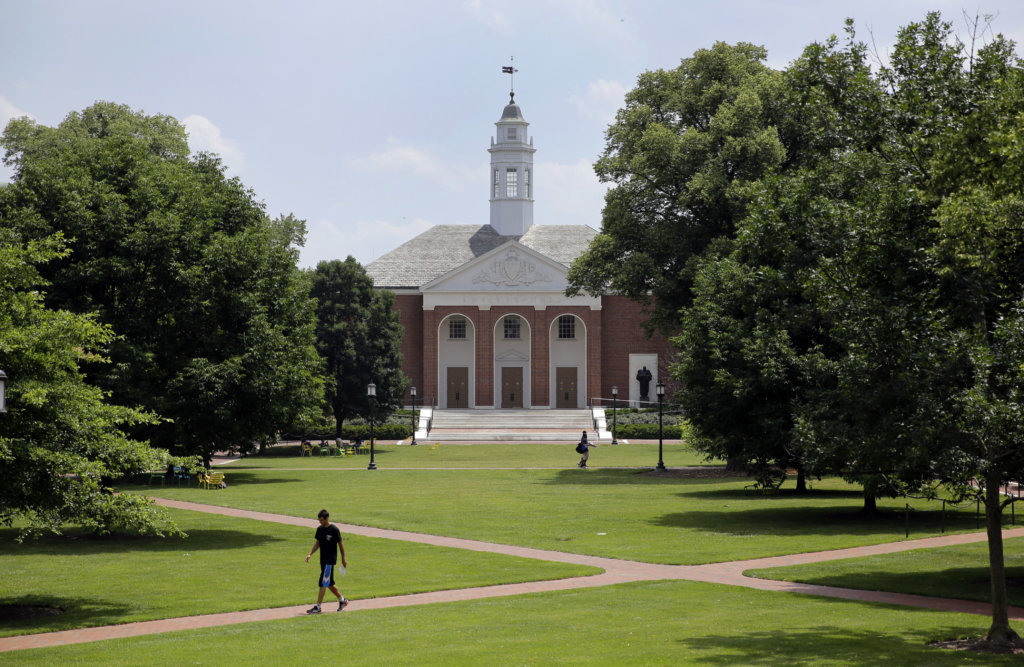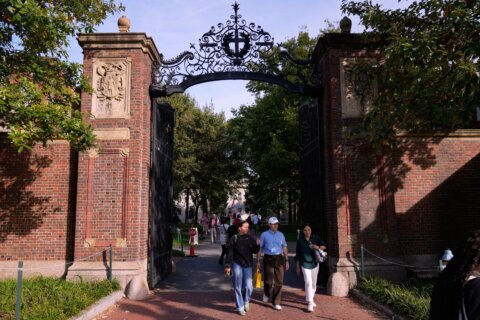
Several D.C.-area schools ranked highly in the U.S. News & World Report’s annual ranking of Best Colleges.
Anita Narayan, the managing editor for education at U.S. News, told WTOP that among National Universities (schools which offer a range of graduate and doctoral degrees), Johns Hopkins tied for No. 10; Georgetown came in at No. 24; and the College of William and Mary tied for No. 40.
What changed in how the 2020 U.S. News Best Colleges rankings were calculated?
Princeton, Williams top 2020 U.S. News best colleges rankings
Explore the 2020 best national universities
See the 2020 best Liberal Arts colleges
Among Liberal Arts Colleges (which emphasize undergraduate education), Washington and Lee placed 10th; the U.S. Naval Academy tied for No. 17; and the University of Richmond tied for No. 23.
U.S. News ranks colleges on criteria that reflect what Narayan called “outcomes measures,” such as retention and graduation rates. Last year, they included social mobility as a factor in their ratings, which she defined as how students who get Pell Grant aid fare at various colleges and universities.
“We were trying to look at how well schools were enrolling and graduating low-income students,” Narayan said. “We’re putting our emphasis on schools that are able to keep their students and graduate them, and if they’re doing well with low-income students, we reward them for that.” This year, for the first time, U.S. News is using social mobility as a separate category, which you can find on its website along with dozens of other rankings.
Nationwide, there wasn’t a lot of movement at the top: Princeton University is still No. 1 among national universities, with Harvard back in at No. 2. Columbia, MIT and Yale tied for third.
Among liberal arts colleges, Williams College and Amherst College, both in Massachusetts, were first and second again, while Swarthmore and Wellesley stayed tied for third. Washington and Lee was the only new school in the Top 10.
But the top of the list, Narayan said, isn’t the whole story when it comes to the rankings.
U.S. News said that 90% of the people who visit its rankings aren’t even looking at the Top 10 schools. They’re looking for how universities were rated for certain programs, for affordability or other factors.
“The focus is on finding the right fit. So in terms of how to use the rankings, it’s just a starting place, a starting point.”
She added, “Don’t hang your hat on ‘I just want to go to a Top 15 school or a Top 50 school.’ You really want to look at why a school is ranked that way, and then look at all the other factors and the data that we provide.”
For some students, it’s about affordability; for others, it can be about a particular major, or about location.
The U.S. News education site has rankings of colleges and universities based on internship opportunities; others, for the best study-abroad programs; first-year experiences; best values; what the magazine calls “A+ Schools for B Students” and more.
“It just allows prospective students to evaluate which schools best fulfill their goals, depending on what they’re looking for,” Narayan said.








